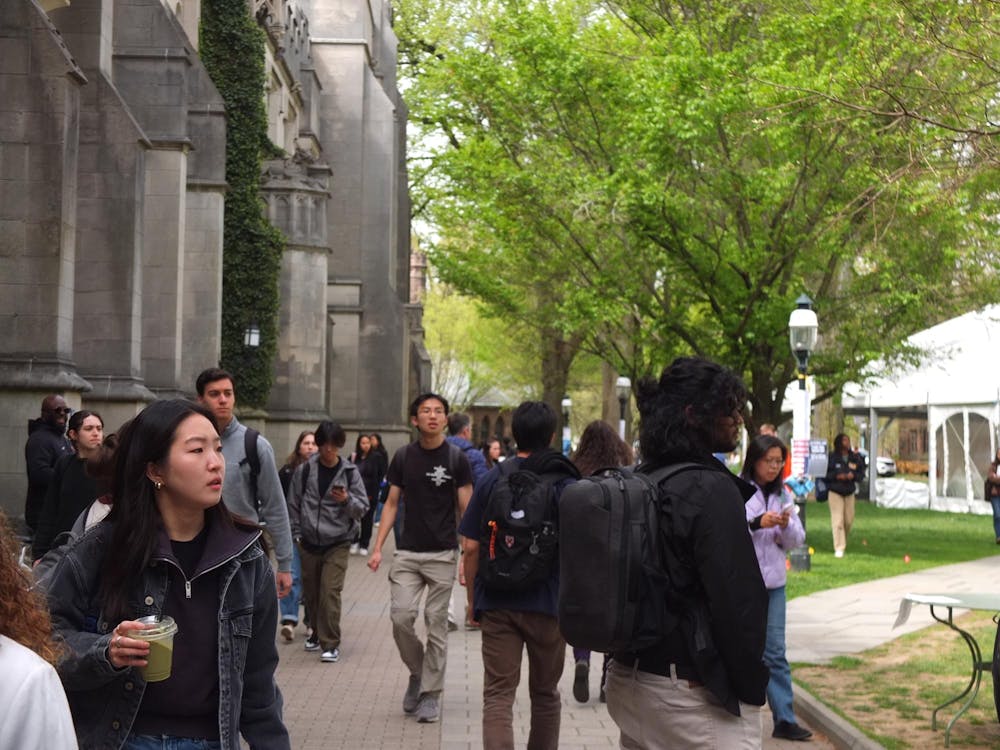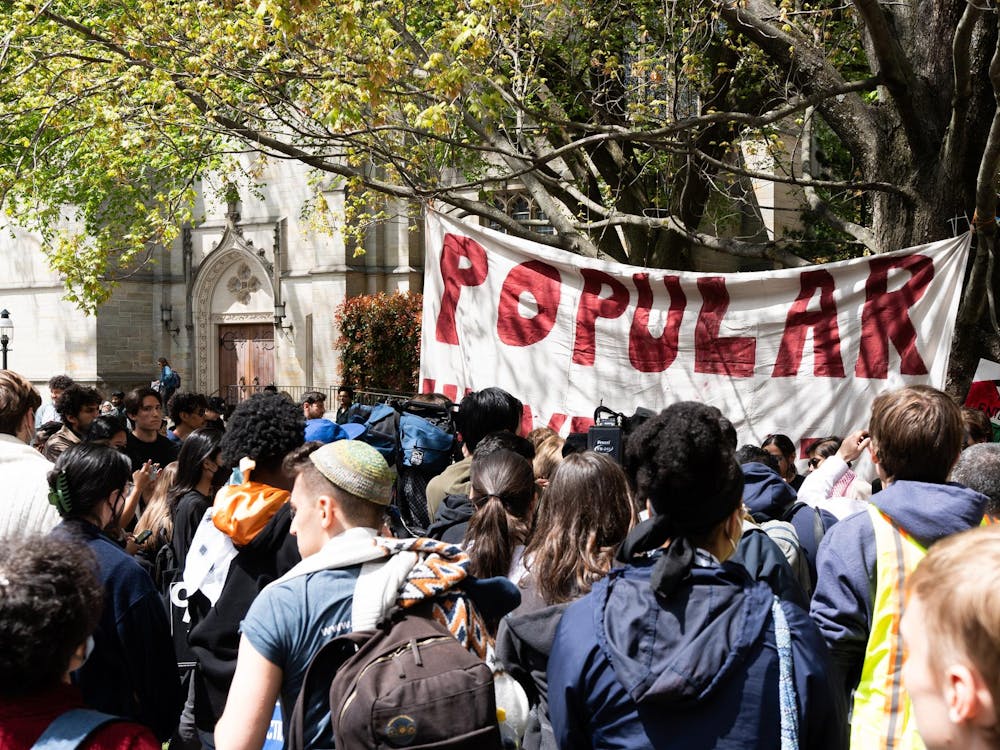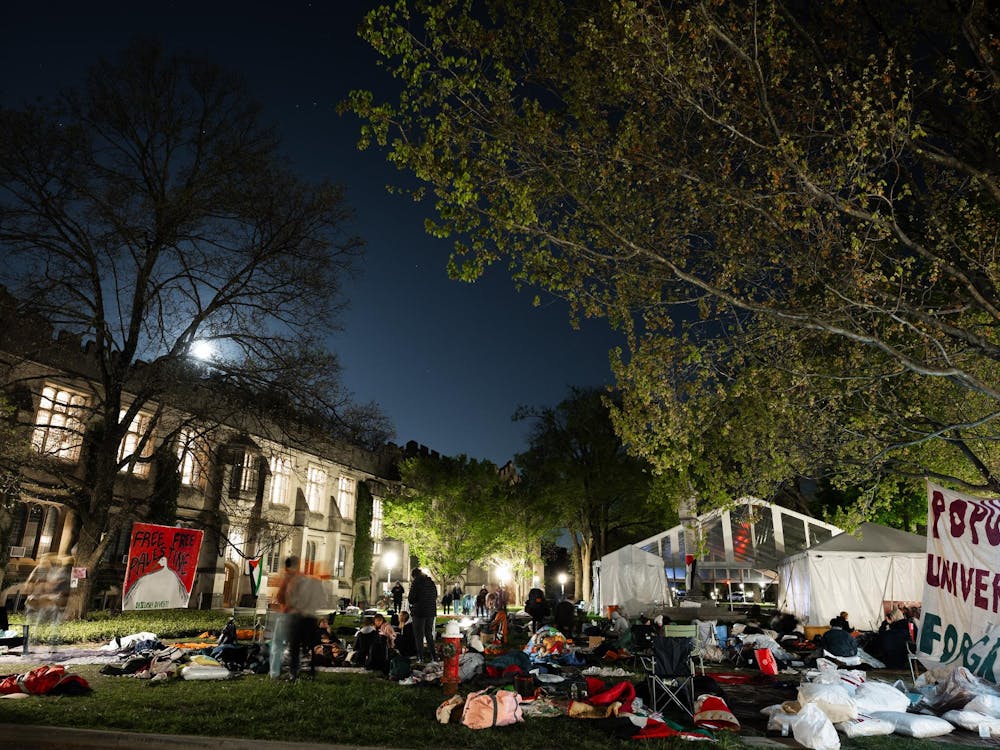Since the beginning of coeducation at the University, women have risen in visibility and prominence on the Street and in student organizations in general.
Some women experienced pushback at the beginning, though, as they sought to carve out places for themselves in campus life.
The Street
Margery Hite ’74 said that during Houseparties she was treated like a visitor, with male students turning to her and asking her about which school she went to.
“The presumption was that if you were a woman, you didn’t go to Princeton,” she said.
Lynn Nagasako ’70 said she was a member of Campus Club and often enjoyed afternoons playing bridge there.
“Those guys were really nice. It was kind of like a home away from home,” she said.
Sally Frank ’80 said that, in her first year, the only way one could get an appointment at Cottage Club, Ivy Club or Tiger Inn was to mark gender as maleon the Bicker form.
Frank went on to file a lawsuit against Cottage, Ivy and TI, claiming that the clubs were public accommodations, meaning they were required to include females.
She said she felt isolated and was routinely subject to harassment duringher time at the University.
Even after Frank graduated she was told that she did not belong during Reunions, she said, noting that there were people at the P-Rade who yelled, “Sally sucks,” and sold T-shirts that read, “Better dead than coed.”

“I actually thought that it was kind of amazing that somebody made a T-shirt with my picture on it,” she said. “My lawyer thought it was worse than I did.”
During “Take Back the Night,” a march for survivors of sexual violence, Janet Sarbanes ’89 recalled instances of sexual misconduct at eating clubs.
“A lot of the boys came out of the club and pulled their pants down and were shouting obscenities, and yelling and pouring beer,” she said, referring to TI.
At Ivy, all the men stood up every time a woman entered the room, Sarbanes said.
“[They did this] because they were being gentlemen,” she said. “They were served by attendants. It was like something out of ‘The Great Gatsby’ or something.”
Sarbanes added that she felt safer at “artsy, progressive and queer” clubs such as Campus and Terrace Club.
Director of the Women’s Center Amada Sandoval ’00 said that the social scene at the University makes people think about the meaning and role of gender, especially when eating clubs have party themes that demean women.
“I think women think, ‘What does it mean if I go to [parties with themes that demean women] and have fun?’ But you know, I don’t think it’s right that women should be characterized that way,” she said.
University President Emeritus Shirley Tilghman said that an eating club task force that was formed in 2009 did not go far enough in eliminating the downsides to the experience on the Street.
“I wish I had made more progress in making the entire eating club selection process a more humane process,” she said.
Changes in leadership
The number of women in leadership positions at the University today, particularly in visible positions, is much higher than when Tilghman arrived in 1986, Tilghman said.
“At every layer, you see more women,” she said. “There’s just a significant difference in the almost 30 years that I’ve been at Princeton.”
There were six women in the 1970s in the University’s prominent student leadership positions, 18 in the 1980s, 22 in the 1990s and 12 in the 2000s. These positions included president of the Undergraduate Student Government, chair of the Honor Committee, editor-in-chief of The Daily Princetonian and president of the freshman, sophomore, junior and senior classes, according to the Report of the Steering Committee on Undergraduate Women's Leadership.
A woman wanting to run for an office often thinks it is safer to run for the post of vice president because she is discouraged from running for president either by someone else or by herself, Sandoval said.
“You [as a woman] have to consider your social reputation, your image, your personality, how you talk, how you look, and for men, a lot of those aspects are just, like, much more easy," USG president Ella Cheng ’16 said."If you’re assertive, you’re confident, whereas if you’re a girl and you’re assertive, then you’re bitchy.”
Cheng is a former staff writer for the Daily Princetonian.
The first generation of women who came to the University were pioneers who fought for the place of women, while the current generation takes coeducation as a given, Tilghman said.
“There was nothing unusual about the fact that Princeton was 50 percent women, and I think that that has had an impact in the way women have fought for their place here at Princeton,” she said.
Women in the USG
Susan Craig ’70 recalled convincing the Undergraduate Assembly president to allow her to run for the position of secretary and then launching a door-to-door campaign.
Craig was a member of the University's Critical Language Program at the time, and the University had told the women they would have to return to their home schools when the school began to admit women.
“Winning the election was my favorite memory because we were convinced that that would prevent our being ejected and sent back to our own school,” she said. “I don’t know about how true it was, but we were convinced.”
At the time, the University was starting to involve students in more important decisions than ever before, Marsha Levy-Warren ’73, the first female officer of USG with her election as vice president in 1971, said.
However, some students were hostile to the changing dynamics in campus life.
When she was a dorm representative in USG, some junior and senior men introduced a resolution that there should not be women on campus, Marsha Rosenthal ’76 said. USG, by an overwhelming majority, decided against talking about the resolution, Michael Buchman ’73, who was on USG at the time, said.
“It was ludicrous and it wasn’t meaningful, but it gave a stark impression of the fact that for some people having women on campus was not acceptable,” Rosenthal said.
Women in the Reserve Officers’ Training Corps
Kimberlee Thompson ’81, who was the first female cadet commander from the University’s ROTC program, said that she was determined to give back to the University when she was awarded the ROTC scholarship.
“Whenever something happens for the first time, it is certainly more about Princeton than it is you, and that was my 15 minutes to fame,” she said.
In 1972, the Navy ended its program, and Air Force ROTC was consolidated at Rutgers University in New Brunswick, 17 miles north of the University.
“The military presence is a really big part of Princeton history,” Christina Onianwa ’18, who said she was the only student in the restarted Navy ROTC program during her first semester at the University, noted. “You go to Nassau Hall and you see the names of people who died to serve their country, who came to Princeton and learned at Princeton. I just really want to celebrate that tradition.”
This article is the fourth in a four-part Women’s History Month feature series.








